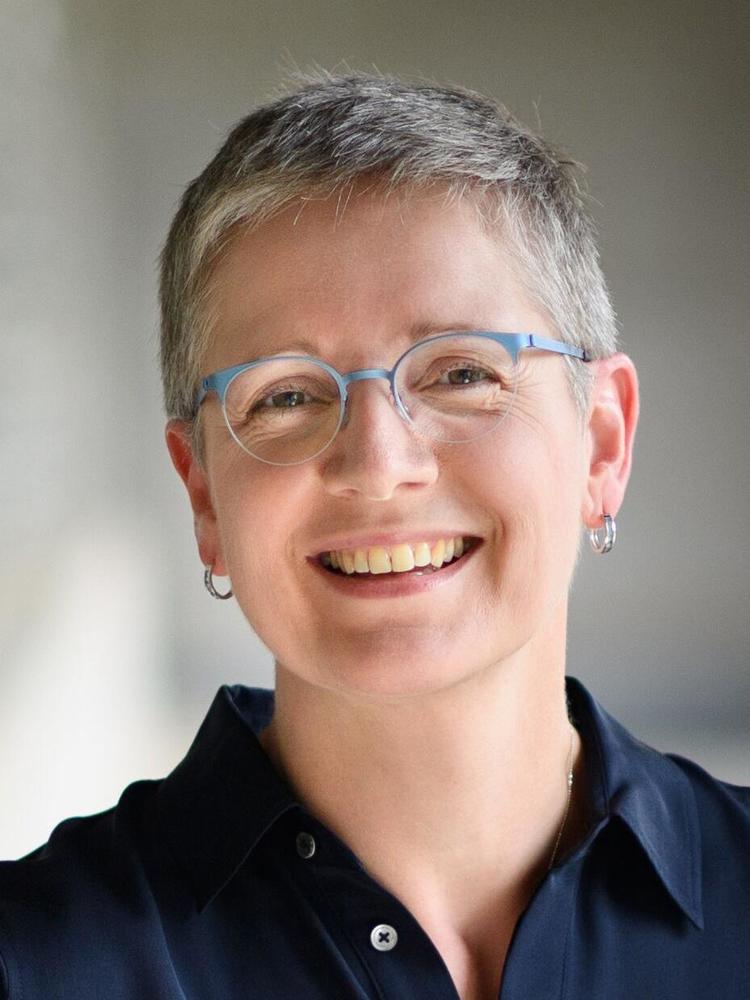
As a student surrounded by peers working on their junior papers or senior theses, as well as constantly hearing about groundbreaking faculty research, I came to seek a way to better engage with the research around me, and to synthesize current research and processes to bring insights to others. I decided to create a series of research insights, interviewing faculty and students, to learn more about their research topics, their personal research process and interests, as well as the potential implications from their findings.
In this article, I’m excited to have had the opportunity to interview Professor Claire Gmachl, who has also previously taught me in EGR 151: Foundations of Engineering: Mechanics, Energy, and Waves, the first physics course in the Engineering Sequence. In our interview, Professor Gmachl graciously shared insights into her research journey, shedding light on the multifaceted landscape of mid-infrared photonics and semiconductor devices.
Shannon Yeow (SY): What is your research about?
Claire Gmachl (CG): My research group is interested in photonics and semiconductor devices, and within photonics, which is light, material, and matter, it is specifically the long-wave infrared spectrum. In the field of mid-infrared photonics, sometimes we are as foundational as material science, and sometimes it goes all the way to small systems to all the semiconductor device research in between. We are definitely experimental. It’s the broad research area that I’ve worked in ever since I fell in love with semiconductor devices. The work of my graduate and undergraduates ranges from machine learning design of quantum cascade lasers, which is on the theoretical end of the spectrum. On the experimental side of the spectrum, we work on ring lasers, disordered hyper-uniform structures, and making semiconductor devices generally better and faster.
SY: Why did you choose to research this topic? How did you become interested in this topic?
CG: I became interested in the process itself during my time in school. We did rotations of two weeks in an intensive lab, rotating across different areas, such as atomic physics, electronics, and semiconductor devices. It’s very important to try things out. Summer research is a great opportunity to try new things, and even if you don’t like it, it will be over in a few weeks. The draw of semiconductor devices for me was that although you start with very plain devices, semiconductors and dielectric metals which by themselves are just materials, when you pattern them just right, suddenly they can do things. Later, somewhere between my PhD and postdoc, I transitioned from transport devices (electrical focus, e.g. electronic devices), to optical devices (photonic focus, e.g. semiconductor devices). Turning on the light and seeing a laser, going from an LED light emitting diode to a laser transition is such a strong phase transition. It’s such a beautiful thing to watch, even though our light is invisible to the human eye, and we can only see it when we monitor it on our instruments.
SY: How do you foresee your research developing in the future and what implications could it have?
CG: For some years of my career, we were working on applied things, meant for improving environmental sensors and environmental sensing. A good amount of those early discoveries are actually used in high-end modern sensing equipment for environmental sensors, chemical sensors, and fabrication plants. Currently, I would think most of my group’s research is very curiosity-driven, geared towards discovering more interesting fundamental things, or trying really hard things. The project on applying disordered hyper-uniform structures (a concept discovered by a Princeton chemistry professor) to the mid-infrared and semiconductor structures could have real application for image analysis. The ring lasers that we work on could be significant for making better chemical sensors.
SY: What does a research-focused daily life look like for you?
CG: I do a lot of administrative work, so most research work is done in collaboration with graduate and undergraduate students. We meet as a group once a week where we update each other on what’s going on, discussing as a group the things that go well and the things that don’t. Later in the afternoon, I meet with some of them individually to discuss their research in more detail. In the evening, I write research proposals or read some papers to have some new ideas for incoming graduate students.
SY: If you had one thing you could share with the world, what would it be?
CG: To be kind….Know that things and people matter.
Interview responses have been edited for clarity and length.
—
It was inspiring to hear how groundbreaking work can start with purely a spark of passion and the courage to try something new. As a COS student with a keen interest in potentially delving into engineering-focused research, I personally feel much more encouraged to try utilizing the countless research opportunities available on campus, whether it is working with faculty or researching over the summer.
I hope this interview provided you with more direction or insight, and I hope you are as excited for the next article in my Research Insights Series as I am!
— Shannon Yeow, Engineering Correspondent

